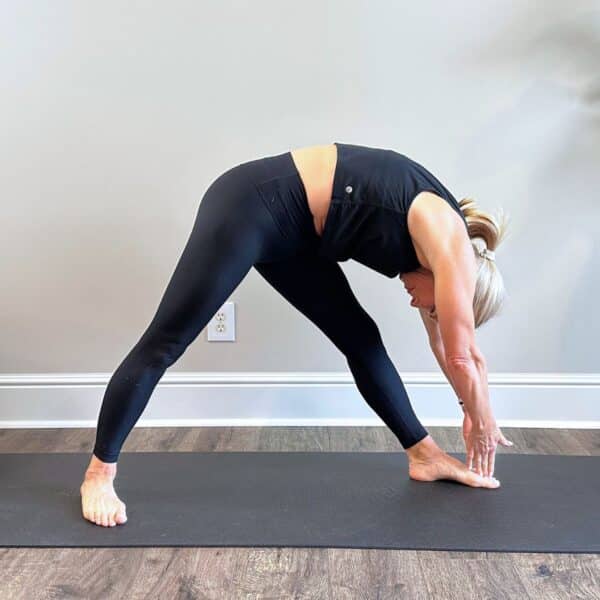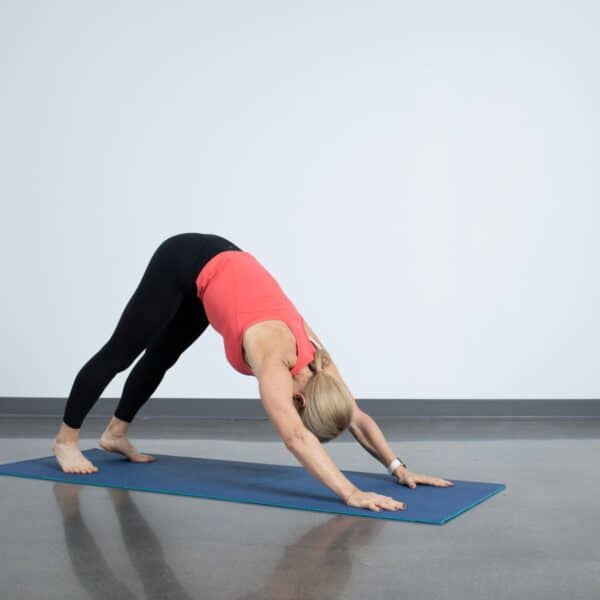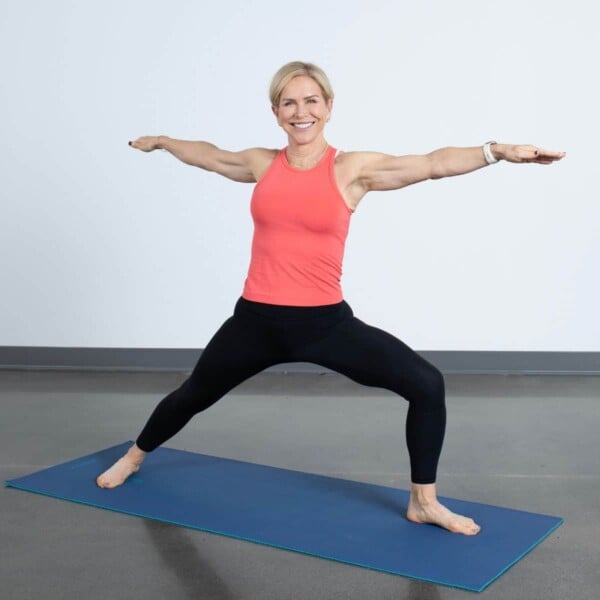This post contains affiliate links. Please see our disclosure policy.

Lotus pose stretches the hips knees, ankles and inner thighs while strengthening the back. Lotus is a pose of calm and relaxation that helps reduce stress and slow down your heart rate and nervous system.
If you learn how to do Lotus pose, you will learn the important skill of relaxation and serenity. According to Mayo Clinic, relaxation and meditation have been shown to help people manage symptoms of conditions such as:
- Anxiety disorders
- Asthma
- Cancer
- Depression
- Heart disease
- High blood pressure
- Pain
- Sleep problems
Lotus, however, is more than a pose of relaxation. It is also an excellent stretch. Depending on how much you are able to cross your legs you will feel a stretch in your hips and groin. You will also stretch the connective tissue that surrounds your knees and ankles.
As you approach Lotus pose be cautious and go only as deep as you are able to breathe.
Lotus pose is traditionally practiced at the beginning or toward the end of a yoga practice, but the benefits can be used at any time of day. As a morning stretch it allows you to spend time in meditation before the start of a busy day.
At the end of the day it allows you to wind down for a more calm and deep sleep as well as going to bed with open hips. It is also a great stretch to perform after using your legs in another form of exercise such as squats, running or cycling.
Lotus is a pose anyone can do.
Lotus Pose Instructions
- Sit on the floor with legs straight in front of you. Bend your right knee and cradle your right shin in your arms. Bend the left knee, pulling your left heel back toward your right glute.
- Place your right leg down on top of your left leg with your right heel pulled back in toward your body – to your shins look like an “X”
- Open your arms and place the back of your hands on your knees leaving palms up. Breathe slowly.






